What appears to us the decor in front of us when we move very quickly?
1) We all observed the rain falling on our windshield when we move quickly by car. This bizarre optical phenomenon makes us believe that the rain falls towards us diagonally so that it falls vertically. More we move quickly, more rain falls "Leaning". In other words, the apparent direction of the water drops, depending on the speed. For those who make sailing the same phenomenon is observable but this time with the wind. More the boat going fast more the sailors feel upwind. In summary, when we are stopped the rain falls vertically, the source of water drops is above our head. More we move quickly more the source of water droplets appears to us in the direction of our movement, that is to say before us.
This optical phenomenon that we see for the rain also happens to the wind, more our boat goes quickly and more the apparent wind direction seems to be in the direction of our movement. Well, this optical phenomenon will also involve light. Moreover, it seems that this is James Bradley (1693-1762) who had the idea of applying this phenomenon to light after a sailing trip on the Thames in the company of a sailor who explained to him the phenomenon. In 1725, studying the changes in the apparent position of the star γ Draconis, Bradley understood this. This non-intuitive phenomenon is called the aberration of light. The aberration is a change in the apparent direction of a signal when we moves on. More you go quickly more the decor seems to be contract forward in the direction of travel.
Conversely, the rear of the decor grows.
| | If an observer travels at the speed of light, it will have the illusion amazing to see in front of him, all objects, those located in front but also those located behind. All objects will tend to congregate in the direction in which the observer moves. This is the phenomenon of relativistic aberration of light.
2) Another effect occurs when we move quickly is the Doppler effect. This effect is well known as we all have heard the sound of an ambulance coming towards us and then moves away. When the ambulance is approaching us the sound of the siren is more acute when moves away the siren sound is more grave. This phenomenon also applies to light waves. As for the sound is the tone that varies for light is the color. When we get closer to a light source, the wavelength is compressed and the light source is slightly turn blue. When we move away from the source, the wavelength of light stretches into the red, it will go slightly red.
3) Another effect is in addition to earlier when we move quickly. With the speed of movement, the light flux will increase in the same manner that the flow of a river when moving rapidly in water. The apparent flow of the river seems more important than stopping. When moving at a speed close to that of light, the amount of light varies considerably, becoming stronger front and lower back. Even to the point of seeing in front a fully saturated light and complete darkness behind.
NB: Between the wavelength (λ) and frequency (ν) is the following relationship: ν = c / λ
ν = wave frequency in hertz
c = speed of light in vacuum in m / s
λ = wavelength in meter | |  Image: If an observer traveling at a very high speed close to that of light, it will have the illusion amazing to see in front of him, all the objects of the universe, those located in front but also those located behind. All objects will tend to congregate in the direction in which the observer moves. This is the phenomenon of aberration of light. In addition, by the Doppler effect, wavelength of the light sources will compress slightly and the view will turn blue. Finally, the quantity of light will vary considerably, becoming stronger front and lower back. Credit image: astronoo.com |
 Automatic translation
Automatic translation



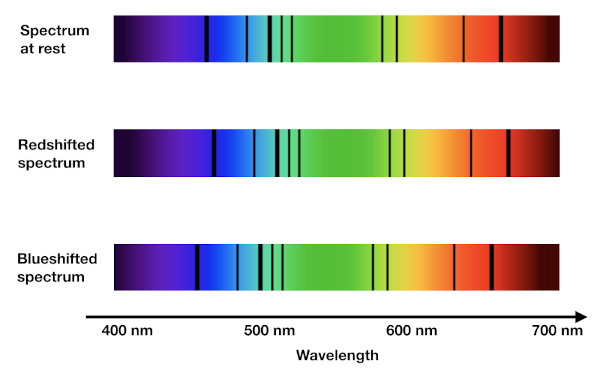 Redshift calculation (z)
Redshift calculation (z)
 Spectacular airglow in France
Spectacular airglow in France
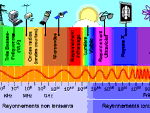 Light, all the light of the spectrum
Light, all the light of the spectrum
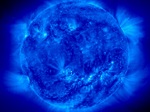 The spicules of the Blue Sun
The spicules of the Blue Sun
 Global dimming
Global dimming
 Solar pillar, a link between sky and earth
Solar pillar, a link between sky and earth
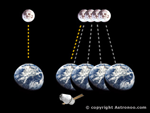 The speed of light and space-time
The speed of light and space-time
 The Universe of X-rays
The Universe of X-rays
 Diamond rings above the Pacific
Diamond rings above the Pacific
 The incredible precision of the second
The incredible precision of the second
 Effects of light aberration
Effects of light aberration
 Radioactivity, natural and artificial
Radioactivity, natural and artificial
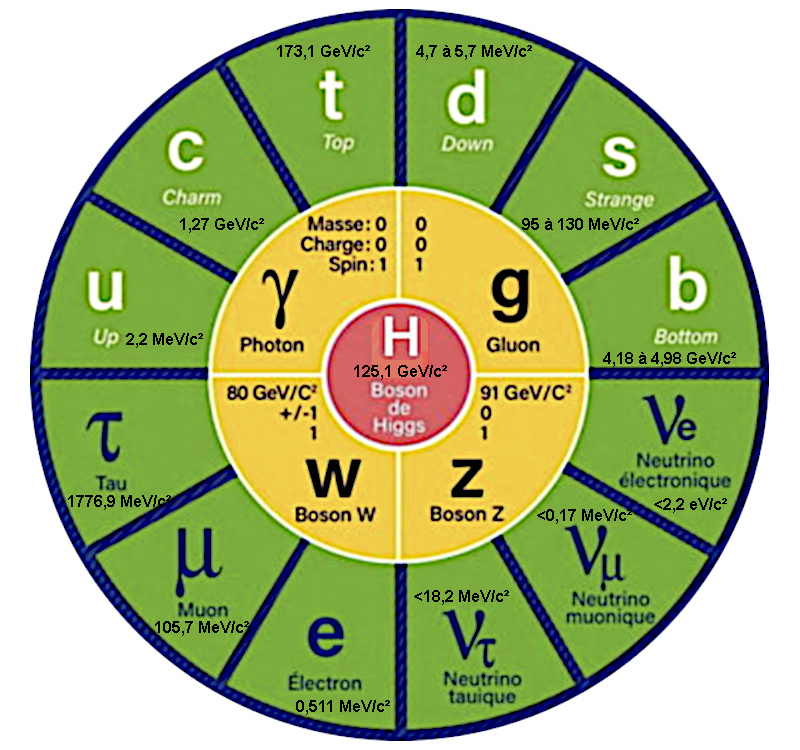 Why do elementary particles have no mass?
Why do elementary particles have no mass?
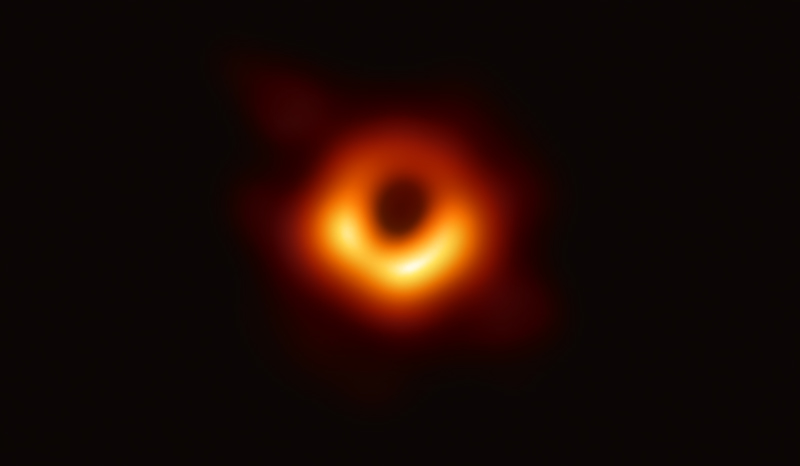 The shadow of the black hole
The shadow of the black hole
 Dawn and its rays of light
Dawn and its rays of light
 The Blue Moon
The Blue Moon
 Gravitational illusion or gravitational lens
Gravitational illusion or gravitational lens
 The incredible illusion of the same color
The incredible illusion of the same color
 Perfect storm and devastating effects
Perfect storm and devastating effects
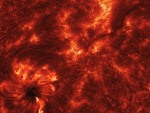 The infernal journey of the photon
The infernal journey of the photon
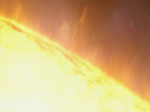 The power of the Sun
The power of the Sun
 Bioluminescence of living organisms
Bioluminescence of living organisms
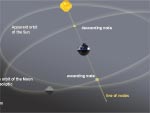 Eclipses explained by the plane of the orbit
Eclipses explained by the plane of the orbit
 Super Moon
Super Moon
 Laser light
Laser light
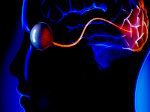 We do not see with our eyes but with our brain
We do not see with our eyes but with our brain
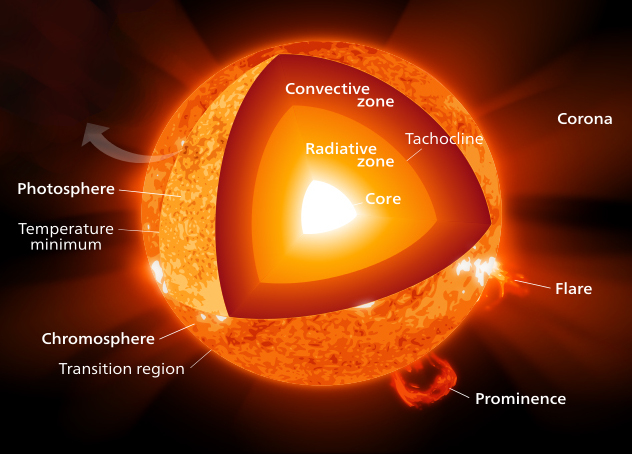 Differences between heat and temperature
Differences between heat and temperature
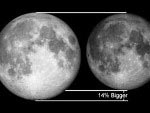 Big Moon Illusion
Big Moon Illusion
 Zodiacal light, the diffuse white glow
Zodiacal light, the diffuse white glow
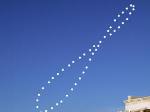 Explanation of the 8 of the analemma
Explanation of the 8 of the analemma
 The colors of the rainbow
The colors of the rainbow
 Shadow of the Earth anti-twilight ark
Shadow of the Earth anti-twilight ark
 How many photons to heat a cup of coffee?
How many photons to heat a cup of coffee?
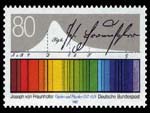 Spectroscopy, an inexhaustible source of information
Spectroscopy, an inexhaustible source of information
 The Cherenkov light
The Cherenkov light
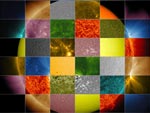 The lights of the Sun
The lights of the Sun
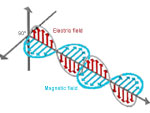 What is a wave?
What is a wave?
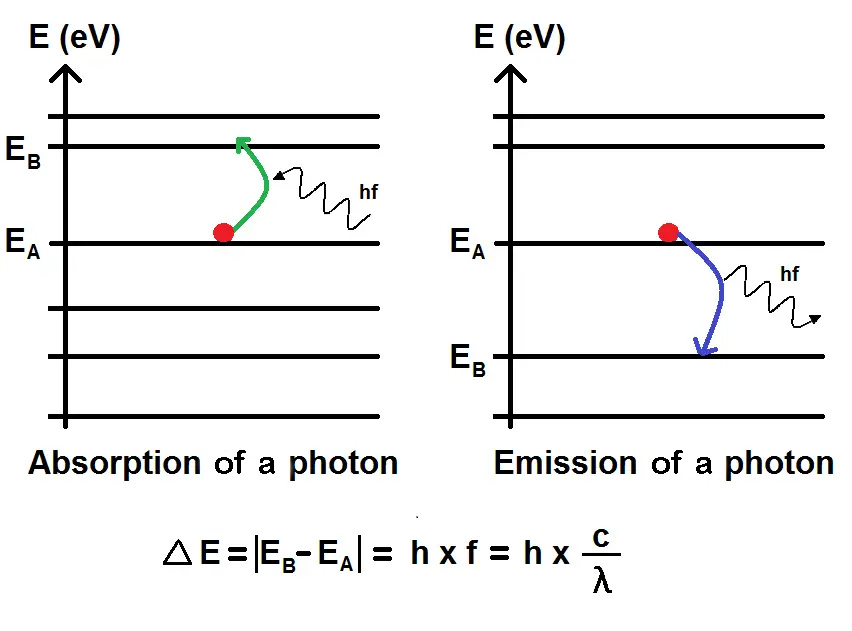 Planck's equation and black body light
Planck's equation and black body light
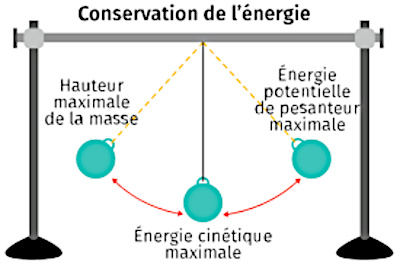 Energy Conservation
Energy Conservation